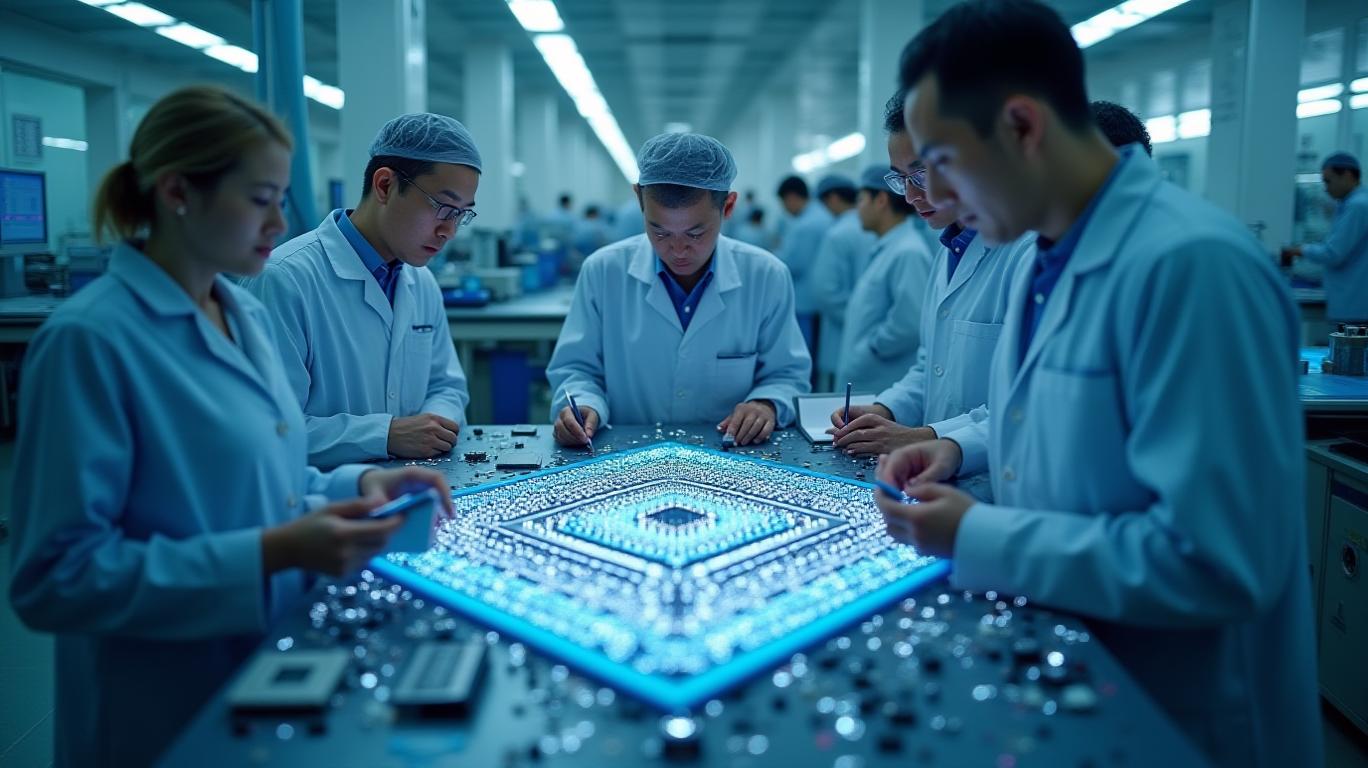Foxconn's $3B UTAC Gambit: A Semiconductor Power Play or Regulatory Quagmire?
The $3 billion bid by Foxconn Technology Group for Singapore-based UTAC Holdings marks a bold pivot in the global semiconductor supply chain. This move isn't merely about acquiring a contract manufacturer—it's a strategic bid to vertically integrate advanced packaging capabilities, positioning Foxconn to dominate the 5G, AI, and automotive chip markets. Yet, the deal's success hinges on navigating geopolitical minefields and operational execution. For investors, this is a high-stakes opportunity—but one that demands scrutiny of both upside and risk.

The Strategic Play: Vertical Integration for Dominance
Foxconn's bid targets UTAC's advanced packaging and testing expertise, which are critical for next-generation chips used in smartphones, autonomous vehicles, and AI systems. By acquiring UTAC, Foxconn aims to reduce reliance on third-party suppliers and control a key link in the semiconductor value chain. This vertical integration could amplify its ability to offer end-to-end solutions to clients like
, Qualcomm, and Tesla, potentially unlocking $10+ billion in annual revenue from high-margin semiconductor services.UTAC's facilities in Singapore, Thailand, China, and Malaysia also provide Foxconn with a foothold in Asia's manufacturing hub, minimizing supply chain disruptions. The $300 million annual EBITDA of UTAC adds immediate profitability, while its customer base of fabless chipmakers and foundries (e.g., TSMC, SMIC) opens doors to lucrative partnerships.
The Regulatory Hurdle: Navigating U.S.-China Tensions
The deal's largest risk is geopolitical. UTAC's operations in China, particularly its testing facilities, could trigger U.S. export control red flags. Washington's strictures on technology transfers to China's military-industrial complex—exemplified by the $1.5 billion fine proposed against TSMC—loom large. Foxconn, a Taiwanese firm with deep ties to mainland China, faces scrutiny even as it avoids direct U.S. jurisdiction.
The U.S. Committee on Foreign Investment (CFIUS) may also intervene if the deal involves U.S. technology or data. Meanwhile, Beijing's stance toward overseas asset sales by its firms (UTAC's owner, Wise Road Capital, is Beijing-backed) remains opaque. A misstep here could derail the acquisition or force costly concessions, such as divesting UTAC's Chinese assets.
Execution Challenges: Integration and Competition
Even if regulatory hurdles are cleared, integrating UTAC's operations into Foxconn's sprawling empire will test management. UTAC's advanced packaging technologies—like fan-out wafer-level packaging (FOWLP) and 3D chip stacking—are highly specialized. Foxconn's manufacturing expertise in consumer electronics may not directly translate to semiconductor precision.
Competitors like Amkor Technology and ASE Group could also outbid Foxconn, especially if Wise Road Capital seeks a premium. UTAC's EBITDA multiple of 10x (assuming $300M EBITDA) is reasonable, but semiconductor valuations are volatile. A prolonged bidding war or regulatory delay could sour the deal's economics.
Investment Case: High Reward, High Risk
For investors in Hon Hai Precision (2317.TW), the UTAC bid is a double-edged sword. Success could catalyze a 15-20% jump in earnings and a premium valuation as Foxconn diversifies beyond iPhone assembly. However, failure to secure the deal or regulatory penalties could depress stock prices by 10-15% amid stalled growth.
Recommendation: Investors should treat this as a “call option” on Foxconn's semiconductor ambitions. Buy the stock if the bid proceeds smoothly by mid-June (post-non-binding bids deadline) and U.S.-China relations stabilize. Hedge downside risk with put options or sector ETFs like XSD, which track broader semiconductor trends.
Conclusion: A Gamble Worth Watching
Foxconn's UTAC bid is a landmark test of its ambition to become a semiconductor powerhouse. The strategic rationale is clear: control advanced packaging, diversify revenue, and capture the $500 billion 5G/AI chip market. But the path is fraught with regulatory pitfalls and operational complexity. For investors, the window to act is now—decisions made in the next 6-8 weeks could determine whether this becomes a masterstroke or a misstep.
The clock is ticking. Will Foxconn secure its future—or stumble into a regulatory quagmire? The answer could reshape the semiconductor landscape for years to come.

Comments
No comments yet